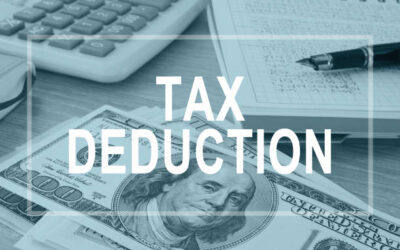Blog
Basis, Capital Gains, and Losses

Basis, Capital Gains, and Losses
Now is the time to act smart, so that you can cut down your taxes by ensuring your basis on your investments is correct. Pauline, an entrepreneur who had just invested in her own startup, was aware of this. She knows that following the tricks of the trade now, may help in cutting down on taxes at the end of the financial year. So, here’s the lowdown on getting it right; to your benefit.
Did you buy property for your business last year? Did you sell stocks or mutual funds? Did you receive an inheritance? Did someone gift you a car, house, stock, or any asset other than cash? In all these events, your total costs, investment or inheritance in assets is known as basis that can affect your tax return.
For instance, if you purchased a copy machine for your business and began to use it in the year, the amount of depreciation you can deduct depends on your basis. In this case, basis can affect future year returns since depreciation may be spread over the life of the equipment. Sell the copier before it’s totally depreciated, and the remaining basis affects the gain or loss you report on your return.
This proves that basis is important, but how do you establish it? The answer depends on the way you acquire the property. For business assets, such as a copy machine, basis is usually what you pay for it, including sales tax and freight. For stocks, the purchase is your cost-plus commissions. Mutual fund purchases can be more difficult to calculate because you report dividends and capital gains, but often dividends and capital gains are simply put back into the mutual fund.
Reinvestments in mutual funds will increase your basis If someone gifts assets to you (not inherited), then your basis, in that asset, is what the donor paid for it. Property you inherit is typically valued at Fair Market Value (FMV), at the date of death, of the donor. This amount, which is reported to you by the personal representative or trustee, of an estate, is the basis you will use when you sell or dispose of the property (like Mom’s house or Dad’s car or furniture).
The Internal Revenue Service (IRS) has some great points on how to address capital gains and losses. When you sell a ’capital asset,’ the sale usually results in a capital gain or loss. A ‘capital asset’ includes most property you own and use for personal or investment purposes.
Here are 10 facts from the IRS on capital gains and losses:
- Capital assets include property such as your home or car. They also include investment property such as stocks and bonds.
- A capital gain or loss is the difference between your basis and the amount you get when you sell an asset. Your basis is usually what you paid for the asset.
- You must include all capital gains in your income. Since 2013, you may be subject to the Net Investment Income Tax (NIIT). The NIIT applies at a rate of 3.8% to certain net investment income of individuals, estates, and trusts that have income above statutory threshold amounts.
- You can deduct capital losses on the sale of investment property. You can’t deduct losses on the sale of personal-use property, like your house, car, or furniture, etc.
- Capital gains and losses are either long-term or short-term, depending on how long you held the property. If you held the property for more than one year, your gain or loss is long-term. If you held it for one year or less, the gain or loss is short-term.
- If your long-term gains are more than your long-term losses, the difference between the two is a net long-term capital gain. If your net long-term capital gain is more than your net short-term capital loss, you have a ‘net capital gain’.
- The tax rates that apply to net capital gains will usually depend on your income. For lower- income individuals, the rate may be zero percent on some or all their net capital gains. In 2013, the maximum net capital gain tax rate increased from 15 to 20 percent, depending on your income. A 25 or 28 percent tax rate can also apply to special types of net capital gains.
- If your capital losses are more than your capital gains, you can deduct the difference as a loss on your tax return. This type of loss is known as a Net Capital Loss. This Net Capital Loss is limited to $3,000 per year, or $1,500 if you are married and file a separate return.
- If your total net capital loss is more than the limit you can deduct, you can carry over the excess losses you are not able to deduct to next year’s tax return. You will treat those losses as if they happened that year.
- You must file Form 8949, Sales and Other Dispositions of Capital Assets, with your federal tax return to report your gains and losses. You also need to file Schedule D, Capital Gains and Losses with your return.
Here are some points to remember:
- Basis is defined in numerous ways. It is either what you paid for assets or what others paid for it, if gifted to you. But basis is stepped up to Fair Market Value, FMV, if inherited.
- Basis is important to determine gain or loss when you sell or dispose of something
- The higher your basis, the lower your capital gain (thus the lower your taxes)
- Mutual fund basis increases as capital gains and dividends are reported if they are reinvested (add each year to your mutual fund cost). Now, brokerage houses keep this information for you, even if you transfer or move your investments to another brokerage firm.
- Reduce your capital gains tax by keeping track of your basis. Keep an annual log of what you pay for something plus what you reinvest. If you are gifted or inherit assets, then get a basis value from either the estate or the one who gifted it to you.
Related Blog Posts
Tips for Farmers and Farm Tax Returns
Learn how to pass on more of your wealth to your heirs and pay less to the government before it's too late! Click here...Address & Map(602) 264 - 9331CLIENT PORTALAddress & Map(602) 264-9331 Bringing food to the plate matters. So those who toil hard to...
Deductions allowed when you do not itemize
Learn how to pass on more of your wealth to your heirs and pay less to the government before it's too late! Click here...Address & Map(602) 264 - 9331CLIENT PORTALAddress & Map(602) 264-9331[DISPLAY_ULTIMATE_SOCIAL_ICONS] There are lines and then there...
Basis, Capital Gains, and Losses
Learn how to pass on more of your wealth to your heirs and pay less to the government before it's too late! Click here...Address & Map(602) 264 - 9331CLIENT PORTALAddress & Map(602) 264-9331[DISPLAY_ULTIMATE_SOCIAL_ICONS] Now is the time to act smart,...
Do You Owe The IRS?
Learn 5 Secrets The IRS Doesn't Want You To Know.
Click on the button below to get FREE access to this exclusive content.
Tax and Financial Advice from an expert
Mr. Hockensmith has been a guest newscaster for national and local TV stations in Phoenix since 1995, broadcasting financial and tax topics to the general pubic. He has written tax and accounting articles for both national and local newspapers and professional journals. He has been a public speaker nationally and locally on tax, accounting, financial planning and economics since 1992. He was a Disaster Reservist at the Federal Emergency Management Agency, for many years after his military service. He served as a Colonel with the US Army, retiring from military service after 36 years in 2008. Early in his accounting career, he was a Accountant and Consultant with Arthur Andersen CPA’s and Ernst & Young CPA’s.









